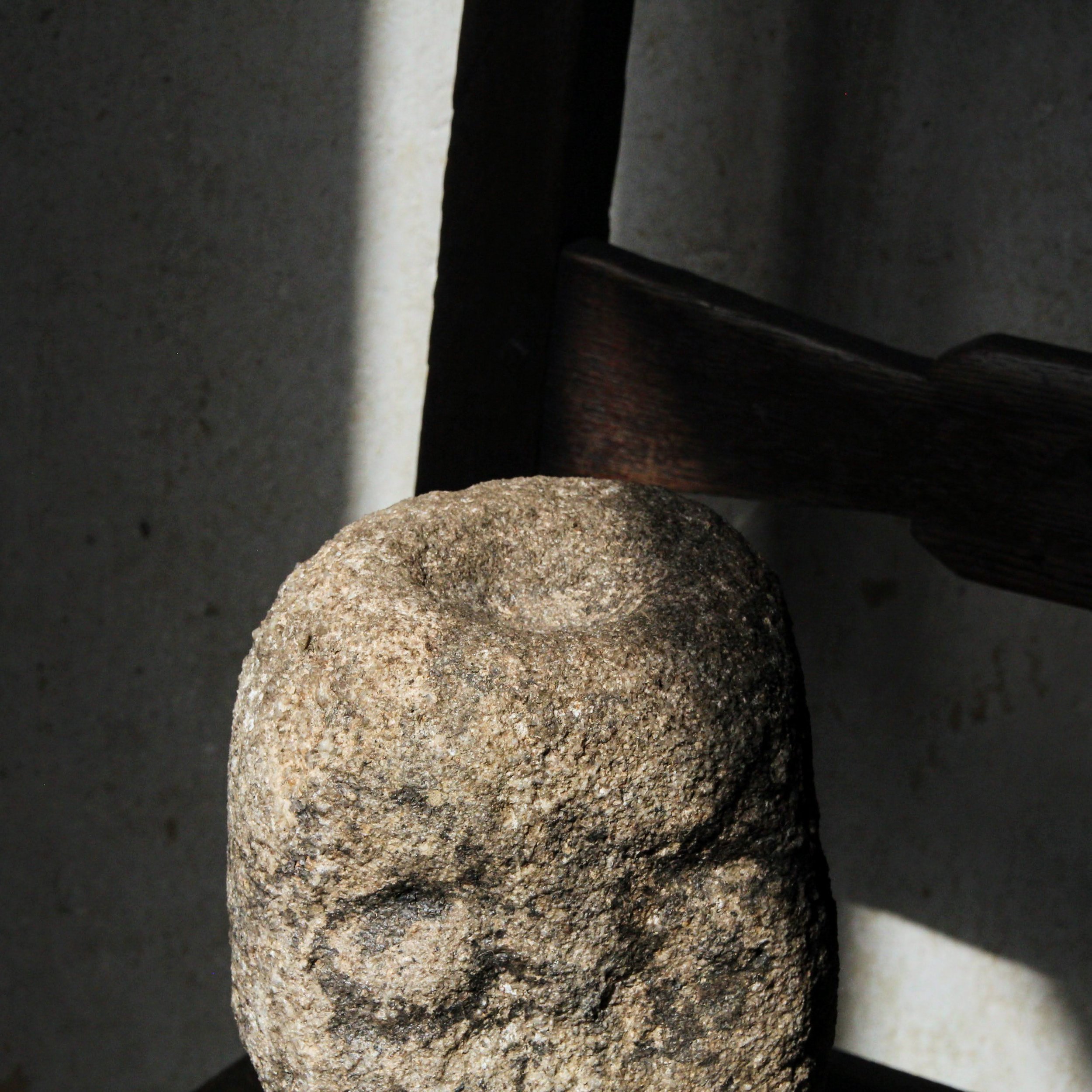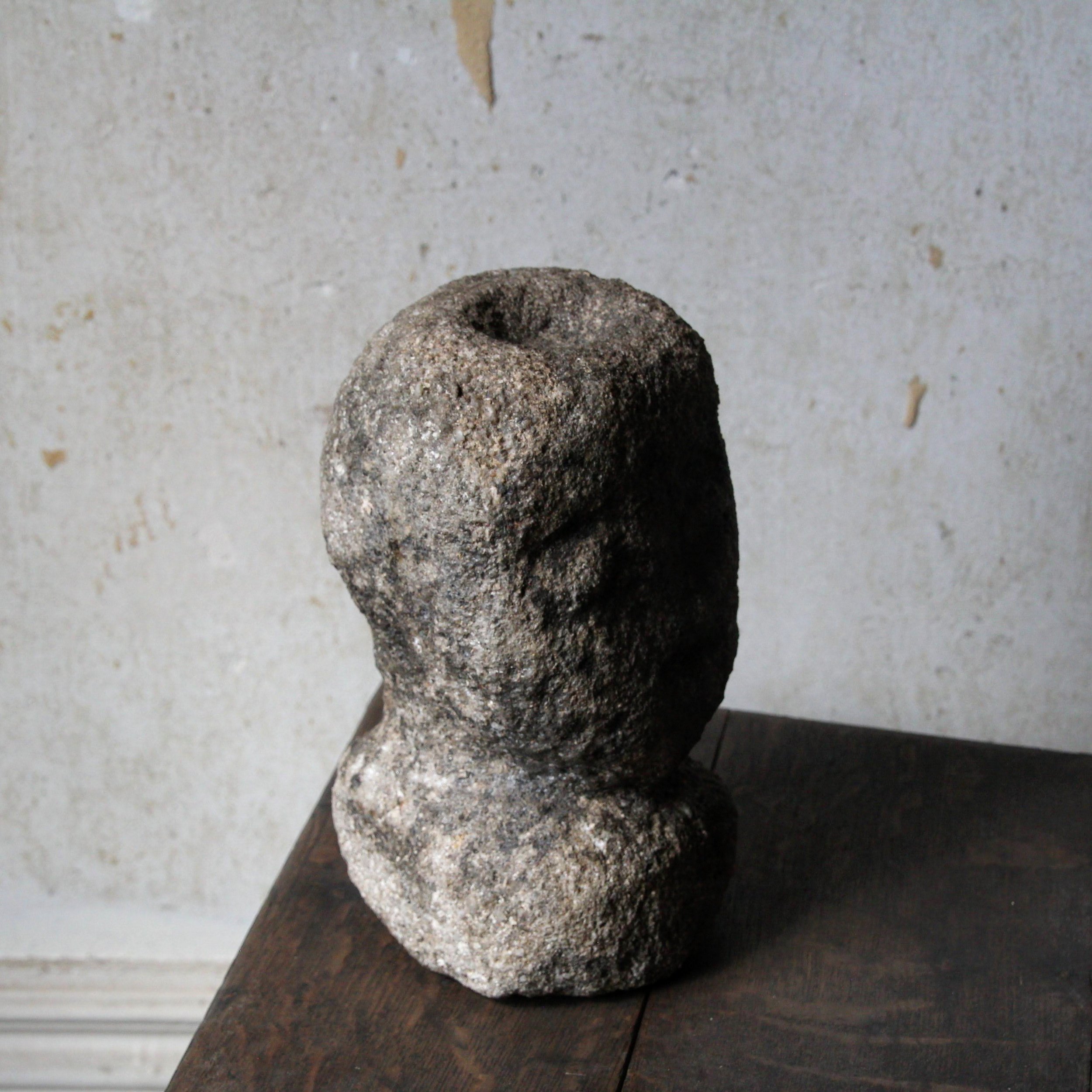 Image 1 of 8
Image 1 of 8

 Image 2 of 8
Image 2 of 8

 Image 3 of 8
Image 3 of 8

 Image 4 of 8
Image 4 of 8

 Image 5 of 8
Image 5 of 8

 Image 6 of 8
Image 6 of 8

 Image 7 of 8
Image 7 of 8

 Image 8 of 8
Image 8 of 8









Ancient Celtic stone head, very rare, cult of the severed head
A very rare ancient Celtic carved stone libation head, probably pre Roman, related to the famous 'cult of the severed head'- the Celts being known to decapitate and worship the heads of their dead enemies, with the head in this context being a symbol of the world of the gods; a kind of liminal boundary point between the earthly and spiritual realm, with the heads often serving as receptacles for offerings to the gods, in the form of animal blood, berries etc. As the tribes became more civilised and their societies grew, beginning around the period prior to the arrival of the Romans, these decapitated heads were phased out in favour of stone replicas, like this one, which served the same purpose but were obviously more permanent pieces. The head is obviously weathered, as would be expected, though it still retains the outline of a face, as well as the overall human bust structure, and perhaps most notably the dimple in the top where the previously mention offerings would have been placed.
H 24 cm x W 13 cm x D 12 cm
A very rare ancient Celtic carved stone libation head, probably pre Roman, related to the famous 'cult of the severed head'- the Celts being known to decapitate and worship the heads of their dead enemies, with the head in this context being a symbol of the world of the gods; a kind of liminal boundary point between the earthly and spiritual realm, with the heads often serving as receptacles for offerings to the gods, in the form of animal blood, berries etc. As the tribes became more civilised and their societies grew, beginning around the period prior to the arrival of the Romans, these decapitated heads were phased out in favour of stone replicas, like this one, which served the same purpose but were obviously more permanent pieces. The head is obviously weathered, as would be expected, though it still retains the outline of a face, as well as the overall human bust structure, and perhaps most notably the dimple in the top where the previously mention offerings would have been placed.
H 24 cm x W 13 cm x D 12 cm